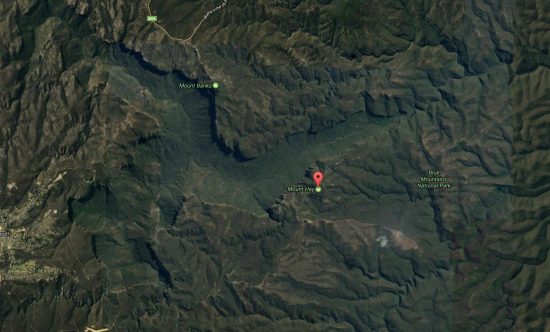
Grose Valley, with Mt. Banks and Mt. Hay: 33.6209° S, 150.4102° E.
Jun 5, 2017
The signs are all around us; signs that point to a different interpretation of the Earth’s geological history.
Rather than vague theories that include millions of years magically appearing out of nowhere to explain what we see, we need only look at what is in front of us and not be guided by presumptions.
Anywhere you look you can see the signs. As I live west of Sydney, Australia in an area called the Blue Mountains, I’ll look there. Lots of signs, so I will look at a not-so-obvious geological formation that everybody sees, but dismisses as a water-carved valley.
West of a township called Leura is a valley system called the Grose Valley. First thing you notice (if your eyes are open) is that the valley walls are vertical cliffs; they are just about parallel with the opposite cliffs. The plateau has been “cut through” by the valley, but no one can explain where the water came from to cut the valley. Of course, believing that water cuts rock one has to believe in science fiction! The Blue Mountains Plateau is sandstone and is not a hard rock. Even if water were a possible agent, it does not leave vertical cliffs. There would also have to be debris from the undercutting of the cliffs, and as they collapsed into the valley, there would be evidence. No debris is to be found, however.
Next is the valley’s shape: a 3 way intersection where each arm of the valley is at approximately 120 degrees. But it gets stranger. At the end of arm the valleys “kink” again at 120 degrees, all in the same direction of rotation.
It does not matter what theory you come up with, there is nothing in our normal understanding of geological forces that can explain this valley formation. You may notice that one of the valleys has cut through Mount Banks—almost 30 percent of it is missing. Most people do not see this.
On each arm of the intersecting valley system is a mountain: Mount Banks, Mount Hay and on the smaller arm a conical hill called Lockleys Pylon. Conical hills formed of sandstone are not quite right when you look at the traditional viewpoints of sandstone formation. The two other mountains when viewed from above have a “molten” appearance, which still doesn’t fit with standard ideas about sandstone formation. There are also anomalous tube-like formations of ironstone that litter the area.
There are many more signs where I live; and if these are not an isolated cases then there are signs where you live as well. All you have to do is look.
If normal interpretations of the world around us do not fit observed facts, then we need to think differently and look for other explanations; that is how science should be. If I were to mention that plasma currents in a rotating pattern could be responsible for Grose Valley, you would think I am crazy or just have a wild imagination.
That is ok—I will let you decide which geological theory fits.
Garry Maxfield












